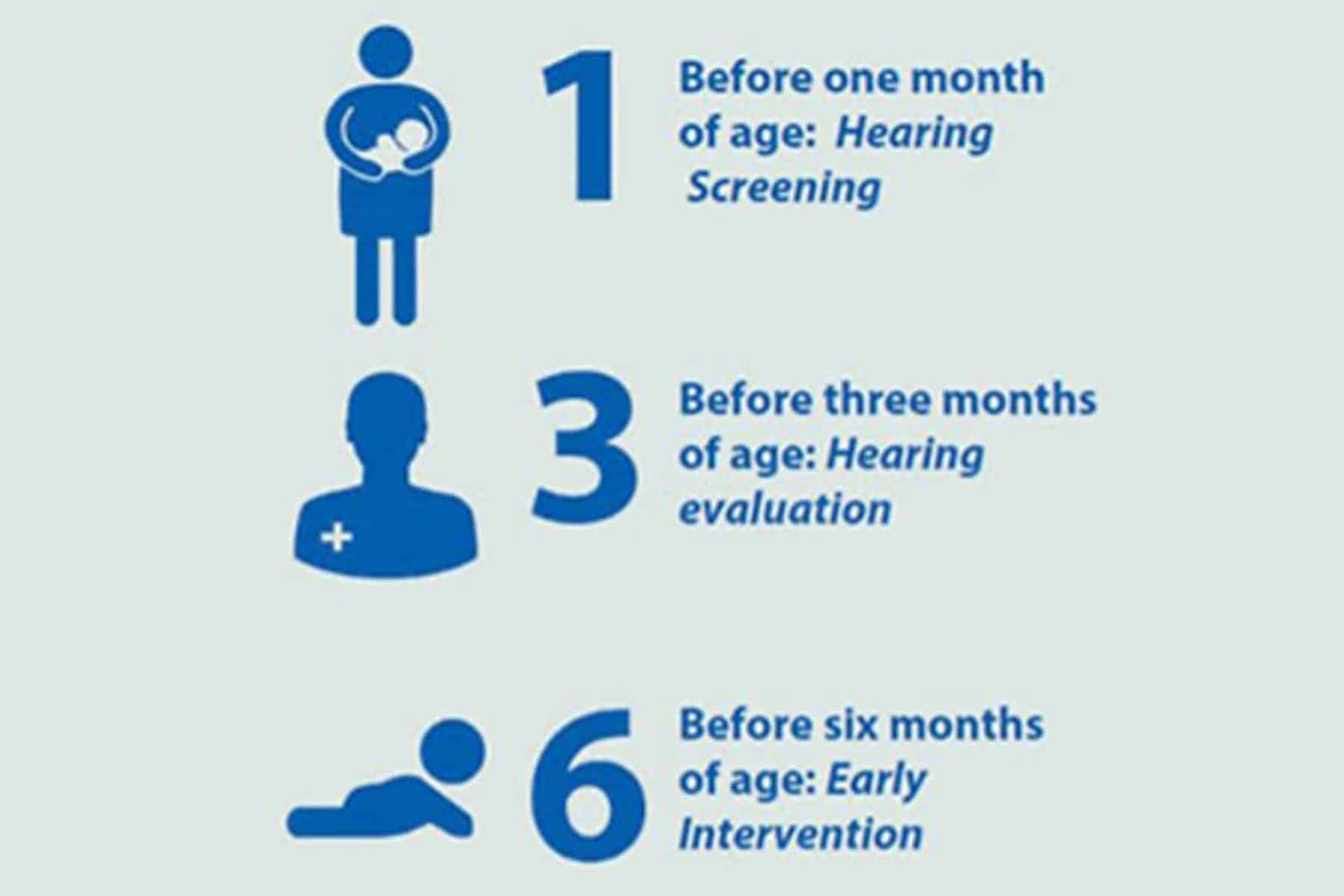Unless you have a child who has been diagnosed with hearing loss, the idea of 1-3-6 may be unfamiliar to you. 1-3-6 is the guide through diagnosis, early intervention and early amplification. Let’s explain.
It is recommended that all newborns have a hearing screening prior to leaving the hospital. If a baby is referred for additional testing on their newborn hearing screening, the next step is a diagnostic evaluation with an audiologist, ideally by the time they are three months old. During this visit, an Auditory Brainstem Response (ABR) test is usually performed. This is an objective test that looks at the brain’s response to sound, and usually requires the infant to be asleep. If hearing loss is confirmed, the next steps usually include a medical evaluation with an ear, nose, and throat (ENT) physician, which your audiologist or pediatrician can recommend and a referral to your state’s early intervention program (for example, Missouri First Steps or Illinois Child and Family Connections).
At the time of your ENT visit, they will do a medical evaluation of the child. If amplification devices are recommended, the doctor will give medical clearance for the devices. Medical clearance, much like a prescription, is required by the FDA before hearing aids or other devices can be fitted on a child under the age of 18 years.
During this time, you should begin the enrollment process for early intervention. It is important to get started with early intervention as soon as possible (prior to 6 months of age) to help your child learn to communicate and to learn about the communication options available. The audiologist who performs the diagnostic testing will likely put in a referral for early intervention at the time of diagnosis. If you believe you have not been referred to your local early intervention program, you can reach out to them yourself or to your pediatrician for more information, or a hearing center or agency like CID – Central Institute for the Deaf can do it for you.
Once your child is referred to the early intervention program, someone will contact you to begin the process. Within 45 days, you will meet to develop an individualized family service plan (IFSP) to determine appropriate goals for your family to help your child through the journey of listening and communicating.
The next key step in the process is to start exploring amplification devices for your child. Your audiology provider will discuss what options are available for your child based on the type and degree of their hearing loss and help you move forward with fitting an appropriate device.
If your child has just been diagnosed with hearing loss, you might be wondering how to navigate the steps. Knowing what to expect can help you ask the right questions and find the best answer for your child and family.
CID has a team of early intervention providers and pediatric audiologists who can help support families and caregivers of children with hearing loss if their goal is listening and spoken language. Families can find additional information on CID’s available resources here.
https://www.cdc.gov/ncbddd/hearingloss/screening.html

Julie Thorne is a pediatric audiologist at CID – Central Institute for the Deaf. Julie joined the CID Audiology team in 2023 after graduating with her doctorate from Washington University School of Medicine in St. Louis. She worked for several years at Cardinal Glennon Children’s Hospital prior to joining CID.












